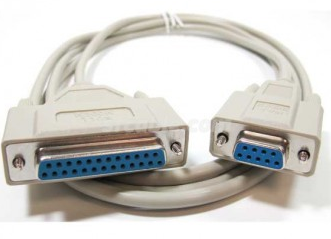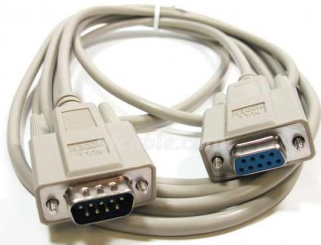
MODEM AND NULL MODEM CABLES
"Modem and null modem cables are used for data transmission between two electronics such as a computer to another computer, central processing unit to monitor and computer to programmable logic controllers. They are used for parallel transmission of data between computers. These cables are used to transmit N-bits of data simultaneously"
Thus, they enable relatively faster transmission of bytes and facilitate quick processing. A parallel connection must use this cable for fast and reliable connection. Modem and null modem cables have ‘N- channels’ which are the number of wires making the cables. Each of these channels is used to transmit a bit so that all the channels help in transmission at the same type. Also, the frequency of bit transmission might vary in different channels. Modem cables are prone to interference at high frequency because of cross connection. Interference will degrade the quality of the signal being transmitted. Therefore, the cables are limited to the speed of the data transmission.
Modem and null modem cables are of various types:
1) Modem cable 2) DB9 null modem cable 3) DB25 null modem cable 4) Bidirectional null modem cable
These cables are readily available at the store. They can either have the same connector on both side or DB9 on one side and DB25 on the other side. The cord is sold with either a male connector on one side or a female connector on the other. The choice depends on where you are going to plug the connector. Usually, DB9 and DB25 have a standard size for use in all electronic equipment.
NULL MODEM CABLES
This cable is used in direct communication between devices by use of RS232 cable. This cord has a cross-link connection between the transmitting and receiving line. DB9 and DB25 are two null modem cords. They can be cross-linked so as to be used as an adapter for a device with DB9 port and the other device with DB25 port. DB9 means that the connector has nine-pin configuration and DB25 means the connector has 25-pin configuration. DB 25 transmits nine types of signals. These signals are frame ground, transmitted data, received data, request to send, clear to send, signal ground, data set ready, data carrier detects and data terminal ready.
DB9 cords do not transmit frame ground signal but all other signals. Bidirectional null modem cable has DB9 on one end and DB 25 on the other end so as to ease adaptation to devices. These cables are applicable for file transfer between personal computers or in remote operation of electronic devices such as debugging. Also, they are used when managing switches, micro-controlled systems, and rack-mounted server units.
RS 232 CABLE
This cable is found in the industrial machine, scientific instruments and networking equipment. It has 25-pin layout that transmits ten types of signals. These signals are data terminal ready, data carrier detects, data set ready, ring indicator, request to send, clear to send, transmitted data, received data, common ground, and protective ground.
This cable is used for connecting data terminal equipment to data circuit terminating equipment. RS 232 has lost its popularity in the modern computers, thus they must be linked by use of external USB to RS 232 adapter or by use of internal expansion card to RS 232 peripheral. RS 232 cable can be a DB9 or a DB25.

